Ephedra, Ma Huang 麻黄Ma Huang (TCM)Som Kalapna, Masania, Narom, Soma Kalpa (Unani) Mtshe ldum མཚེ་ལྡུམ (Tibetan) |
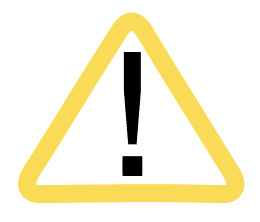
|
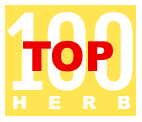
|
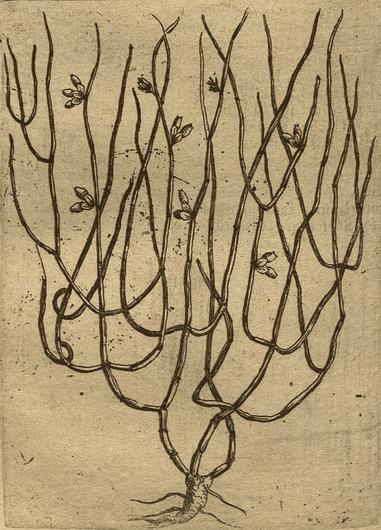 Ephedra spp.
Ephedra spp.Alpini, P., De plantis exoticis libri duo, 1629
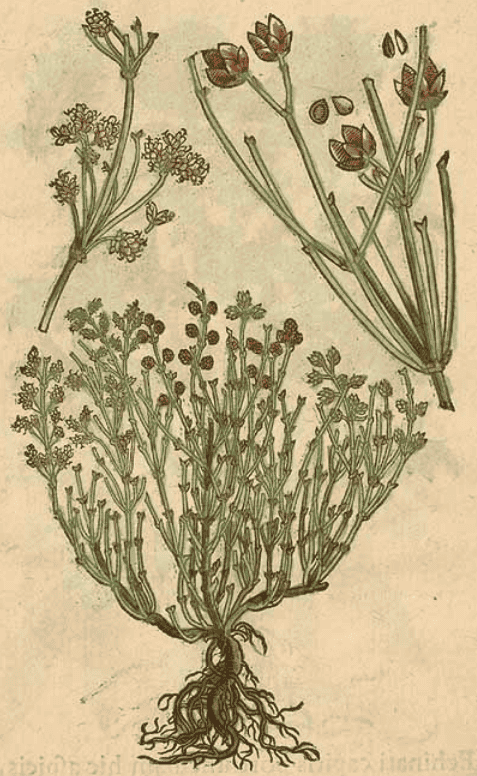 E. distachya
E. distachyaCamerarius, J., Hortus medicus et philosophicus, 1588
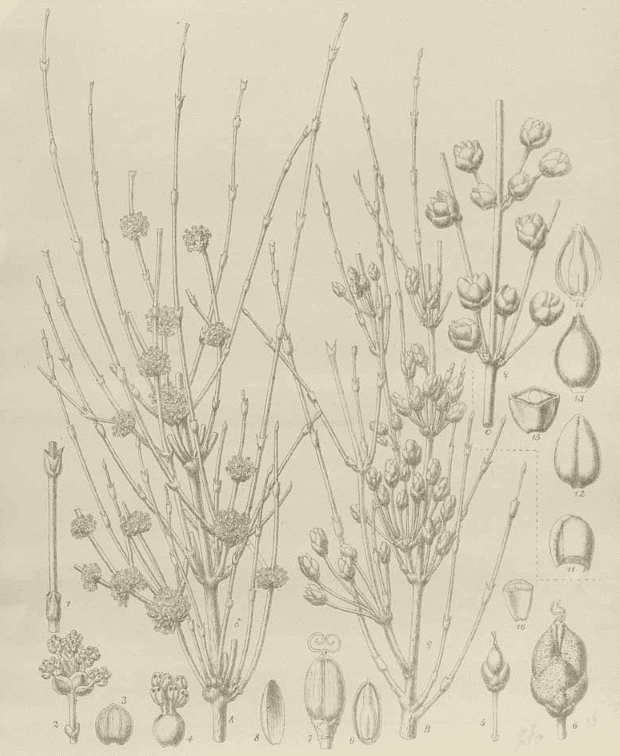 E. pachyclada
E. pachycladaTransactions of the Linnean Society of London, 2nd series: Botany, (1887)
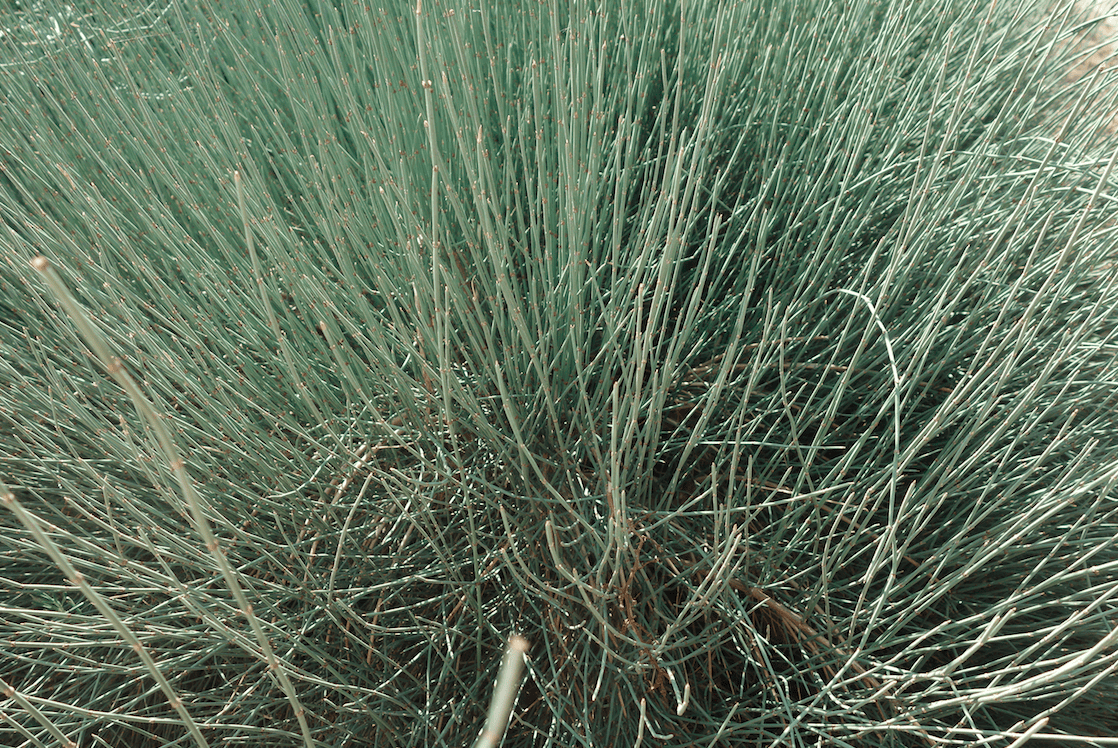 Above: Ephedra growing wild near Urumqi, Xinjiang, China
Above: Ephedra growing wild near Urumqi, Xinjiang, ChinaRight: fresh Wild Ephedra (Adam, 2017) |
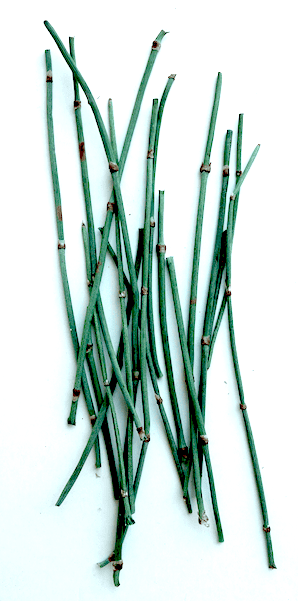
|
Botanical name:
Ephedra spp.
- E. sinica (China-Official)
- E. intermedia (China-Official, central Asia)
- E. equisetina (China-Official)
- E. przewalskii (Japan)
- E. vulgaris (Central Asia to Europe)
- E. gerardiana (Central Asia to Europe)
- E. pachyclada (Central Asia to Europe)
Parts used:
Herb
Temperature & Taste:
Warm, dry. Pungent, slightly Bitter
Some TCM sources said it is Sweet and Neutral
Classification:
A. Clear Exterior Wind-Cold
Uses:
1. Clears Wind-Cold, Clears the Exterior:
-wind-cold cold and flu with chills, fever, headache, lack of sweating
-acute and chronic Fever (Tibetan Medicine)
-used in medicinal baths in Tibet
-“It induced perspiration to disperse pathogenic factors from the skin”. (Shen Nong Ben Cao)
2. Opens the Lungs, Stops Cough and Wheezing:
-Cough and Wheezing from wind-cold
-can be used for Wheezing and Asthma from any cause depending on the medicines it is combined with
3. Clears Cold and Damp, Promotes Urine:
-Edema (especially of an acute nature in TCM)
4. Clears Wind-Cold-Damp, Opens Obstruction, Relieves Pain:
-painful Obstruction of the muscles and joints from Wind, Cold and Damp
-acute muscular and articular Rheumatism
-also toxic sores which don’t form a head
-disperses Tumors and Swellings (Tibetan Medicine)
-“good for treating arthralgia and numbness of the skin and muscle”. (Zhen Quan)
-“It dissolves hard mass, accumulation and assemblage”. (Shen Nong Ben Cao)
-“purges vicious agents”. (Ming Yi Bie Lu)
5. Awakens the Yang:
–”It treats drowsiness” (Ming Yi Bie Lu)
-“disperses the invading pathogenic Cold resting in the Ying (nutrient essence in blood)” (Zhang Yuan Su)
Dose:
1. Low-moderate doses promote sweat and diffuse the Lungs to stop Cough and Wheezing.
2. Note the froth that forms when boiling should be removed as this part can cause agitation. Some have preboiled Ephedra briefly to remove the froth. This is especially useful when larger doses are used.
3. Large doses of 10–15 grams can be used for Edema and fluid swelling, but expereince shows that large doses are best used with 3 times the amount of raw Gypsum (Shi Gao) to inhibit the diaphoretic effect and promote urine.
Decoction: 2–9 grams, 3–5 grams being a common dose (up to 15 grams as a daily dose)
Powder: 500mg–1 ½ gram (up to 3 grams)
Preparation:
1. Removing the Nodes:
Sometimes the nodes are removed; th nodes are said to decrease the diaphoretic effect, so removing them enhances diaphoresis. The nodes and roots both stop perspiration.
2. Hot-water prepared Ephedra:
Steeping in boiling water until the froth rises, then removing the herb and drying lessens agitation, but is slightly weaker to cause sweating.
3. Stir-fried Ephedra:
The herb can be stir-fried with a little water. This reduces the diaphoretic effect, and is better for the Lungs.
4. Honey-fried Ephedra:
This is a way of correcting Ephedra. It is not as dispersing, not as strong to promote sweat, and is milder in effect, but has a secondary strengthening and more prolonged effect on the Lungs. This is optimal when used for any chronic Lung conditions including Asthma. However, in an acute attack, unprepared Ephedra Ma Huang is best.
Comment:
1. It has an ascending and outward-dispersing effect, thereby freeing the Lungs and promoting Sweat.
2. The raw herb is stronger to promote sweat and disperse the exterior, but is apt to cause agitation and is more prone to cause side effects. Preparing with hot water, removing the froth, stir-frying and especially Honey-frying has the effect of reducing its sweat-promoting effect but is better for the Lungs and because these preparations are milder in effect, have a wider range of use for Cough and Wheezing. The Honey-fried herb is also slightly tonifying to the Lungs, so is better for Cough and Asthma with deficiency, as long as it is combined with suitable tonic medicines.
3. “Ephedra Ma Huang is a drug that is good for treating a syndrome with exterior excess. And Cinnamon twig Gui Zhi is a drug that treats a condition of exterior deficiency”. (Wang Hao Gu)
4. In Tibetan medicine it (E. gerardiana) is used for hemorrhage, acute and chronic heat disorders, and Bile diseases.
Correctives:
1. Honey, Licorice
2. Tragacanth, Gum Arabic
3. Almonds reduce the drying effect while enhancing the tonic effect on the Lungs. This is amplified when Licorice is added.
3. According to Li Shi Zhen, combining with Scutellaria Huang Qin stops the negative effect of its excess Heating, which may cause Headache or Eye inflammation.
4. Research has shown Chebula to reduce toxicity when coadministered. The pair reduced agitation of the nervous system caused by Epedhra taken alone, increased bronchodilation while showing hepatoprotective effects. In addition, new epedrine derivitives were found to be made in vivo when both herbs were taken together.
Substitutes:
1. Hyssop, Adhatoda vasica (Unani)
2. Maidenhair
3. Ficus religiosa bark has been used as a substitute for Ephedra in the Himalayas.
Main Combinations:
Ephedra & Apricot/Almond kernel
1. Wind-Cold Cold and Flu:
i. Ephedra with Cinnamon twig Gui Zhi (TCM)
ii. Ephedra with Cinnamon, Ginger (Ayurveda)
2. Cough and Wheezing:
i. Ephedra with Bitter Almond / Apricot kernel Xing Ren and Licorice
ii. from Heat, Ephedra with Bitter Almond / Apricot kernel Xing Ren, Gypsum Shi Gao, Licorice (as in Ma Xing Shi Gan Tang)
iii. from Heat, Ephedra, Scutellaria Huang Qin, Anemarrhena Zhi Mu, Licorice
iv. Cough, Asthma, Bronchitis, Ephedra with Licorice, Platycodon Jie Geng, Morus Sang Bai Pi (Mulberry root-bark) (as in Zhen Ke Ning Tang Jiang of the Chinese Pharmacopoeia)
v. acute Heat-Phlegm, Ephedra with Fritillaria Chuan Bei Mu, Platycodon Jie Geng, Arisaema Tian Nan Xing, Bitter Almond (Xing Ren), Scutellaria Huang Qin, Citrus Chen Pi, Licorice (as in Bao Ke Ning Keli of the Chinese Pharmacopoeia)
vi. from Cold, Ephedra with Bitter Almond / Apricot kernel Xing Ren, Cinnamon twig Gui Zhi and Licorice (as in Ma Huang Tang)
vii. from deficiency, Ephedra with Ginseng and Licorice
viii. Lung congestion, allergic Bronchitis or Asthma, Ephedra, Adhatoda, Long Pepper (Ayurveda)
3. Pneumonia, Ephedra Ma Huang, Scutellaria Huang Qin. (This has been studied)
3. Edema, Water retention:
i. Ephedra, Gypsum (Shi Gao), Atractylodes Bai Zhu, Licorice, fresh Ginger, Jujube (Da Zao)
ii. Ephedra, Tribulus, Coriander seed
4. Obesity: Epedhra Ma Huang, Rhubarb Da Huang, Laminaria (this has been studied)
5. For Wind-Cold-Damp arthritic pain, combine Ephedra with Aconitum Fu Zi
6. Yin-type Abscess (flat, no redness, dark in color), Phlegm nodes and masses:
i. Ephedra, Rehmannia Shu Di Huang, White Mustard seed (Bai Jie Zi), Dang Gui.
ii. Ephedra, Rehmannia Shu Di Huang, White Mustard seed (Bai Jie Zi), Deer horn gelatin (Lu Jiao Jiao), fried Ginger (Pao Jiang), Cinnamon (Rou Gui), Licorice
7. Raynaud’s disease, Phlebitis, Ephedra, Rehmannia Shu Di Huang, White Mustard seed (Bai Jie Zi), Cinnamon twig (Gui Zhi), Safflower (Hong Hua), degelatinated Deer horn (Lu Jiao Shuang)
8. Typhoid and other Fevers, Ephedra, Apricot kernel (Xing Ren), Rhubarb, decocted in Snow water and reduced to form a pill mass. (Chinese Materia Medica, Stuauoft)
9. Trauma, Bruising, Pain, Swelling, Fractures, Ephedra with Frankincense, Myrrh, prepared Nux Vomica. (as in Jiu Fen San)
10. Traumatic injury, Sprain, Strain, Bruising, stabbing pain, Dislocation, Fracture, Ephedra with Dang Gui, Ligusticum Chuan Xiong, Frankincense, Myrrh, Dragons Blood, Eupolphaga Tu Bie Chong (Wingless Cockroach) (as in Die Da Wan).
Major Formulas:
Ma Huang Fu Zi Xi Xin Tang
Ma Huang Tang
Ma Xing Shi Gan Tang
Die Da Wan
Ding Chuan Wan
Fang Feng Tong Sheng San
Feng Shi Ma Qian Pian
Ge Gen Tang
Jiu Fen San
Xiao Qing Long Tang
Safflower Supreme 7 (Gur gum mchog bdun) (Tibetan)
Cautions:
1. Avoid overdose.
2. It can drain the Lung Qi so should be used carefully in those with deficiency. Combining with Licorice and/or Ginseng can correct this.
3. Not used for sweating or night sweats from deficiency.
4. Not used in Hypertension.
Toxicity:
1. Toxic in large doses; 30 grams can be toxic to an adult.
2. The Adverse Effects of Ephedra Herb and the Safety of Ephedrine Alkaloids-free Ephedra Herb Extract (EFE).
3. Bilateral acute myopia and angle closure glaucoma induced by Ma-huang (Ephedra): A case report.
Antidotes:
1. Excess sweating caused by the usse of Ephedra can be stopped by the hair in cold water. (Li Shi Zhen)
2. Licorice
3. Cinnamon twig (Gui Zhi) was shown to ameliorate the chronic effects of Ephedra toxocity. (See here)
Drug Interactions:
Due to Ephedrine content, may interact with:
1. Caffeine and MAO inhibitors, increasing blood pressure
–Cardiotoxicity of Ma Huang/caffeine or ephedrine/caffeine in a rodent model system.
2. Beta-Blockers (reduces efficacy due to opposing action)
3. Ephedrine medication (such as Sudafed), causing ephedrine toxicity, arrhythmia etc.
4. Steroids (dexamethasone), enhancing clearance thereby reducing effectiveness.
